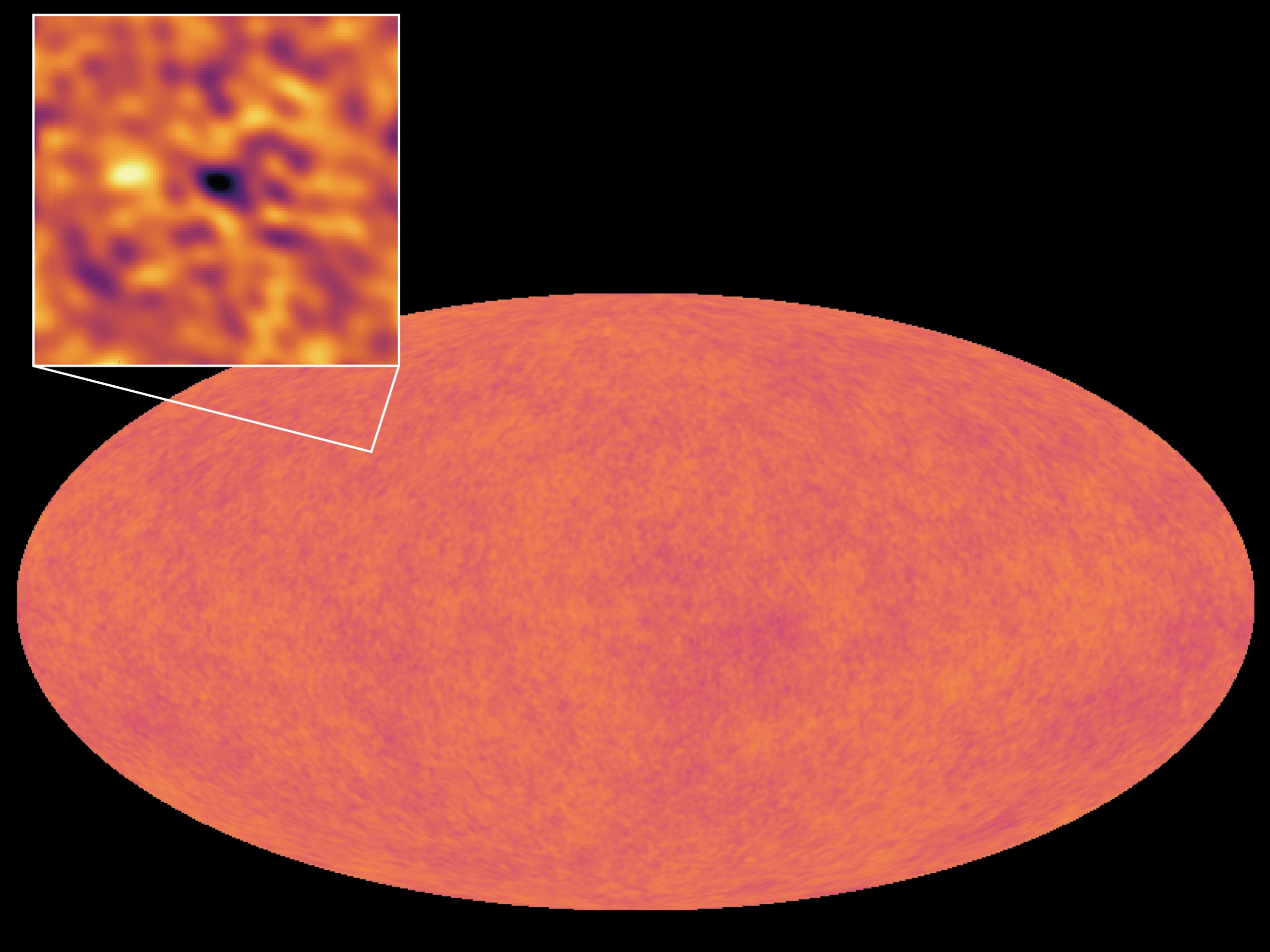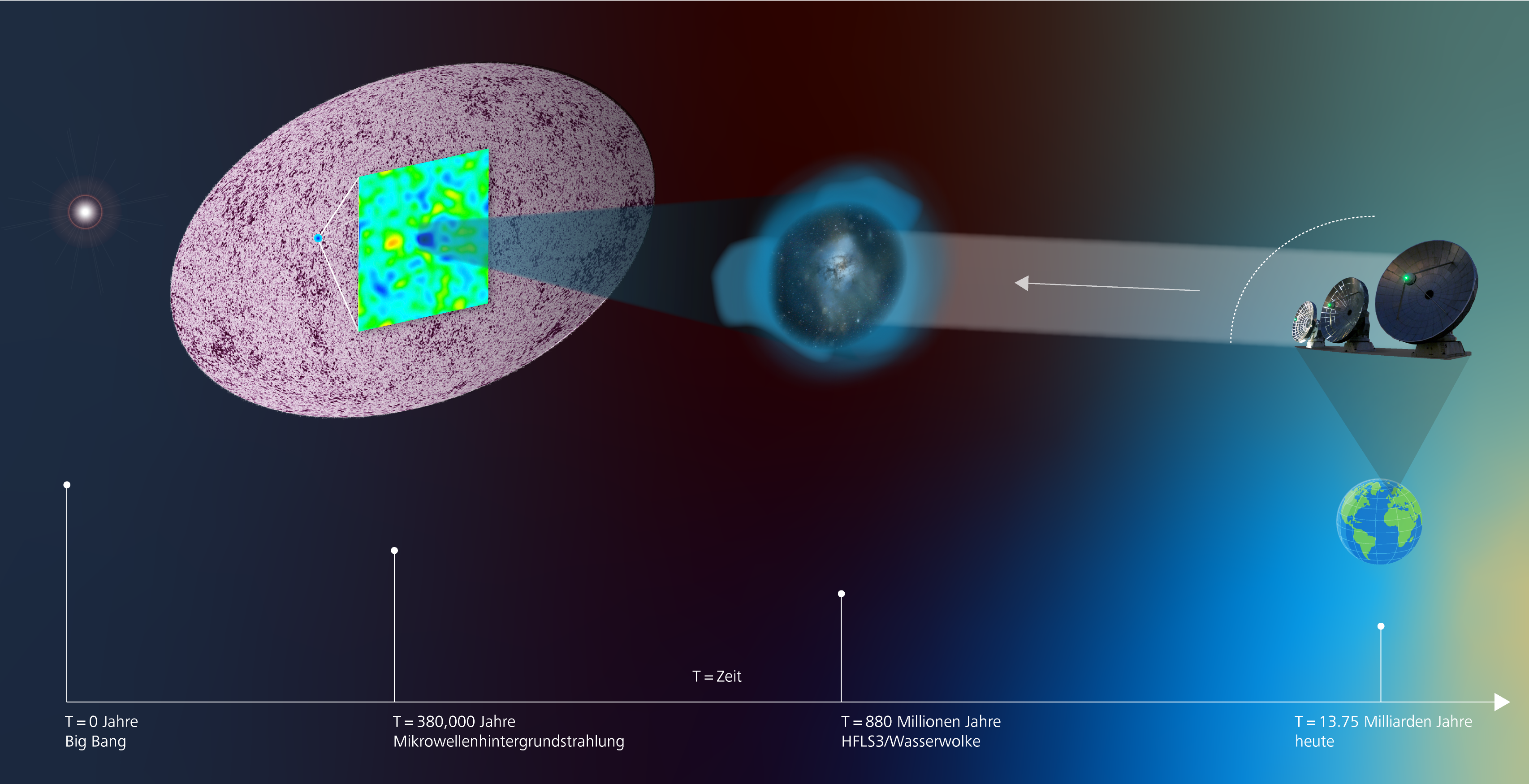How warm was the universe 880 million years after the Big Bang?
13.8 billion years ago, the universe was hotter than hot. Then it expanded and cooled down – to 2.725 Kelvin today, the temperature of the cosmic background radiation. From the moment the cosmic background radiation was released until today, the universe has expanded by a factor of about 1100. The cosmic background radiation, which originally had a temperature of about 3000 Kelvin and whose thermal radiation thus looked at that time as similar as the light of a halogen lamp, cooled down by the same factor. Of course, the entire universe was never equally warm everywhere. This makes it possible for researchers today, as unbelievable as it sounds, to measure the temperature of the universe in its youth. In the science journal Nature, an international group of astrophysicists describes how they managed to do this. The scientists used the NOEMA (Northern Extended Millimeter Array) observatory in the French Alps, the most powerful radio telescope in the Northern Hemisphere. With it, they observed HFLS3, a massive starburst galaxy – that is, a galaxy that forms its stars extremely quickly. Because HFLS3 is so far from Earth, its light took so long to reach us that we observe it 880 million years after the Big Bang. In other words, at a time when the universe was far younger and thus hotter.
Astronomers discovered a cloud of cold water vapor in the galaxy that casts a shadow on the cosmic microwave background radiation. The shadow is created because the colder water absorbs the warmer microwave radiation on its way to Earth. How dark the spot left by the shadow is reveals the temperature difference between the background radiation and the water vapor. Because the temperature of the water can be determined from other observed properties of the starburst galaxy, the researchers were able to calculate how warm the relic radiation from the Big Bang must have been at the time. They came up with a value between 16.4 and 30.2 Kelvin, about seven times warmer than in today’s universe. This corresponds to the predictions of the current cosmological models of 20 Kelvin and thus confirms them. In our cosmological models, the effect of cosmic expansion on temperature is very direct: During the time that the distances between distant galaxies have increased by a factor of 2 due to cosmic expansion, the temperature of the cosmic background radiation drops to half of its original value.
“In addition to demonstrating cooling, this discovery also shows us that the universe had some very specific physical properties in its early days that no longer exist today,” said first author Professor Dr. Dominik Riechers of the Institute of Astrophysics at the University of Cologne. “Very early on, about 1.5 billion years after the Big Bang, the cosmic microwave background was too cold to observe this effect. So we have a unique window of observation that only opens up in the very young universe.” In other words, if a galaxy with otherwise identical properties to HFLS3 existed today, the water shadow would not be observable because the required temperature contrast would no longer exist.
“This important milestone not only confirms the expected cooling trend for a much earlier epoch than previously measured, but could also have direct implications for the nature of elusive dark energy,” says co-author Dr. Axel Weiss of the Max Planck Institute for Radio Astronomy (MPIfR) in Bonn, Germany. In astrophysics, dark energy is thought to be responsible for the accelerated expansion of the universe over the past billion years, but its properties remain poorly understood because it cannot be observed directly with currently available telescopes and instruments. However, its properties influence the evolution of the cosmic expansion and thus the cooling rate of the universe over cosmic time. Based on this experiment, the properties of dark energy remain – for now – consistent with those of Einstein’s “cosmological constant.” “That is, we have an expanding universe in which the density of dark energy does not change,” Weiss explains.

